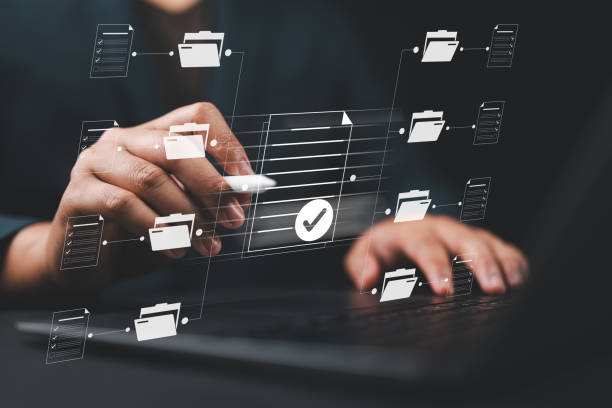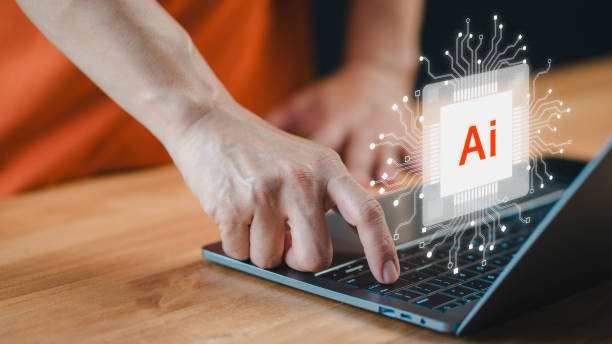What is On-Page SEO and Why is it Important?

On-Page SEO refers to a set of actions taken within a website to improve the site’s ranking in search engines.
These actions include optimizing content, site structure, HTML tags, and other factors related to user experience.
The importance of On-Page SEO lies in the fact that it helps search engines better understand the content of your site and relate it to users’ search queries.
A website with strong On-Page SEO has a better chance of achieving high rankings in search engine results pages (SERPs).
Search Engine Optimization (SEO) is a multifaceted process, and On-Page SEO is just one aspect of it.
To better understand On-Page SEO, you need to be familiar with key concepts such as keywords, Title Tags, Meta Descriptions, URL structure, high-quality content, and user experience.
These factors directly affect your site’s ranking.
Are visitors leaving your online store before making a purchase? Worry no more! With Rasaweb’s professional online store design services, you can solve the problem of not converting visitors into customers forever!
✅ Significant increase in conversion and sales rates
✅ Exceptional and engaging user experience
⚡ Contact us now for a free consultation!
Keyword Research: A Fundamental Step in On-Page SEO
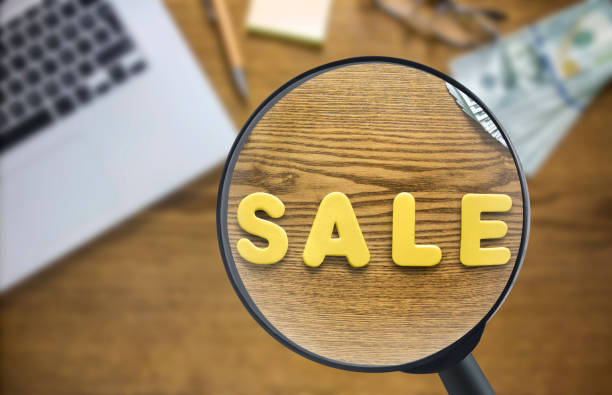
Keyword research is the cornerstone of any successful On-Page SEO strategy.
Identifying the words that users use to search for products, services, or information related to your business helps you optimize your content accordingly.
There are various tools available for keyword research, including Google Keyword Planner, Ahrefs, SEMrush, and Moz Keyword Explorer.
These tools provide you with information on search volume, competition, and related keywords.
When choosing keywords, look for a combination of Head Keywords and Long-Tail Keywords.
Head keywords have high search volume but also more competition.
Long-tail keywords have lower search volume but are more targeted and more likely to convert into customers.
Using appropriate keywords helps you attract more relevant traffic to your site.
Content Optimization for Search Engines and Users
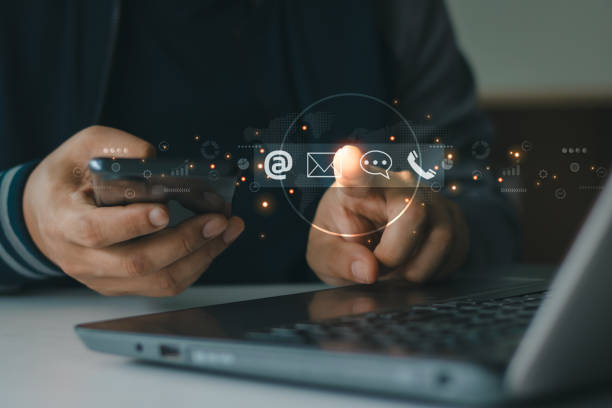
High-quality and optimized content is the heart of On-Page SEO.
Your content should be valuable, engaging, and relevant to users’ needs.
It should also be written in a way that is understandable for search engines.
Here are a few tips for content optimization:
- Use keywords in the title, subheadings, text, and image tags.
- Update your content regularly.
- Longer content usually performs better.
- Use high-quality images and videos.
- Make sure your content is readable and understandable.
Remember that the ultimate goal is to provide content that is both useful for users and helps search engines better understand your site.
Internal linking also plays an important role in content optimization.
By linking to relevant pages on your site, you help search engines understand your site’s structure and drive traffic between different pages.
| Factor | Description |
|---|---|
| Keyword Usage | Using keywords in the title, text, and image tags |
| Content Updates | Producing new content and updating old content regularly |
| Content Length | Producing comprehensive and complete content |
| Use of Images and Videos | Using high-quality visual elements |
| Readability | Writing content that is readable and understandable |
Optimizing Title Tags and Meta Descriptions
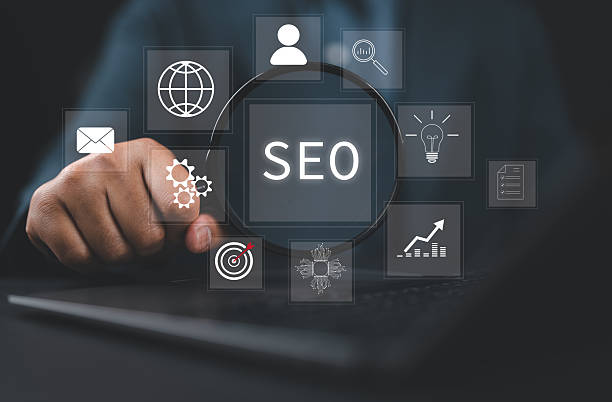
Title Tags and Meta Descriptions play an important role in attracting users from search results.
The title tag is the title of your page that is displayed in search results.
The meta description is a summary of your page’s content that is displayed below the title.
Title tags and meta descriptions should be engaging, relevant, and contain keywords.
The length of the title tag should not exceed 60 characters, and the length of the meta description should not exceed 160 characters.
By optimizing meta tags, you can increase your click-through rate (CTR) in search results.
Remember that title tags and meta descriptions are the first things users see in search results.
Therefore, you should design them in a way that attracts users’ attention and encourages them to click on your link.
On-Page SEO requires attention to detail, and these two elements are no exception.
Is your current online store design not generating the sales you expect?
Rasaweb specializes in professional online store design!
✅ An attractive and user-friendly website designed to increase sales
✅ High speed and security for an ideal shopping experience⚡ Get a free consultation for online store design with Rasaweb!
The Importance of URL Structure in On-Page SEO
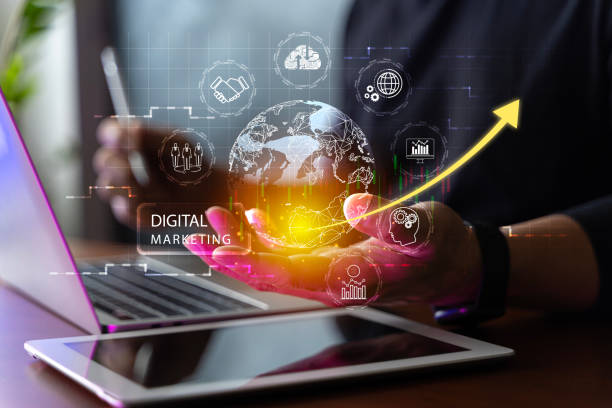
The URL structure of your website also affects On-Page SEO.
URLs should be short, descriptive, and contain keywords.
Avoid using special characters and numbers in URLs.
A good URL structure helps search engines better understand the content of your page and also shows users what page they are on.
For example, the following URL has a good structure:
https://www.example.com/seo/on-page-optimization
This URL is short, descriptive, and contains keywords related to the page’s content.
Using a logical and organized URL structure helps improve user experience and your site’s ranking.
On-Page SEO goes beyond content optimization and includes optimizing the technical elements of the site as well.
Image Optimization for SEO
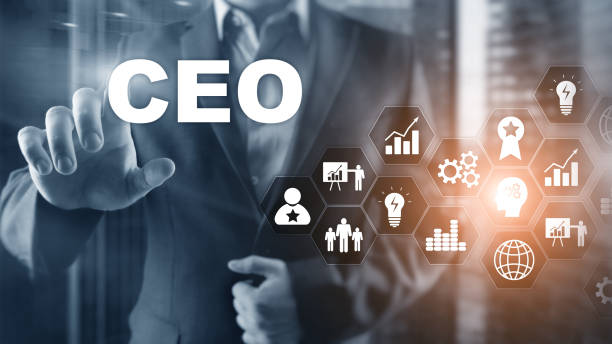
Images play an important role in attracting users’ attention, but they should be optimized in a way that positively impacts your site’s On-Page SEO.
Optimized images help search engines better understand your site’s content and also help improve page loading speed.
Here are a few tips for optimizing images:
- Use a descriptive file name containing keywords.
- Use the alt tag to describe the image.
- Compress images to reduce their size.
- Use appropriate formats for images (JPG, PNG, WebP).
The alt tag is an alternative text for the image that is displayed if the image fails to load.
This tag also helps search engines understand the content of the image.
On-Page SEO includes optimizing all elements of the site, including images.
This comprehensive approach increases your chances of success in ranking.
Internal and External Linking
![]()
Internal and external linking are two important strategies in On-Page SEO.
Internal linking means linking to other pages on your own site.
This helps search engines understand your site’s structure and drive traffic between different pages.
External linking means getting links from other sites.
These links are considered a vote of confidence for your site and positively impact your site’s ranking.
When linking to other pages, use appropriate anchor text.
Anchor text is the text that is displayed as a link.
This text should be relevant to the content of the page you are linking to.
Creating a strong internal link network helps improve user experience and your site’s ranking.
On-Page SEO is incomplete without attention to linking.
These two elements work together to show search engines that your site is valuable and trustworthy.
| Link Type | Description |
|---|---|
| Internal Link | Linking to other pages on the same website |
| External Link | Getting links from other websites |
| Anchor Text | The text that is displayed as a link and should be relevant |
Optimizing Site Loading Speed
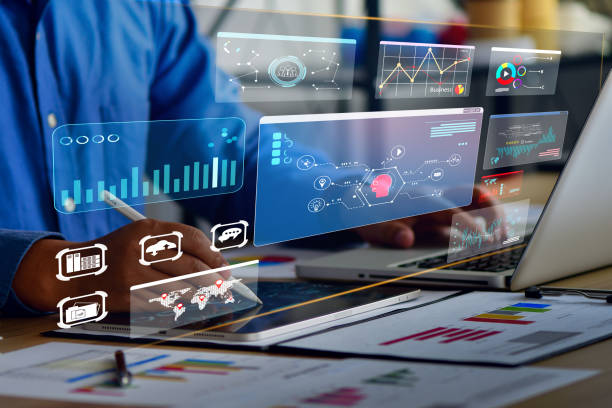
Site loading speed is an important factor in On-Page SEO and user experience.
Users who experience slow loading speeds are likely to leave your site and go to other sites.
Search engines also pay attention to site loading speed, and sites with high loading speeds get better rankings.
To improve site loading speed, you can take the following steps:
- Compress images.
- Use a CDN (Content Delivery Network).
- Optimize CSS and JavaScript code.
- Use caching.
- Use a quality hosting provider.
There are various tools available for testing site loading speed, including Google PageSpeed Insights and GTmetrix.
Using these tools, you can identify and fix problems related to your site’s loading speed.
On-Page SEO is not limited to content, but also pays attention to the technical performance of the site.
Did you know that your website is the first impression customers have of your company? Enhance your business’s credibility with a powerful corporate website from Rasaweb!
✅ Custom and eye-catching design tailored to your brand
✅ Improved user experience and increased customer engagement
⚡ Get a free consultation!
Website Responsiveness
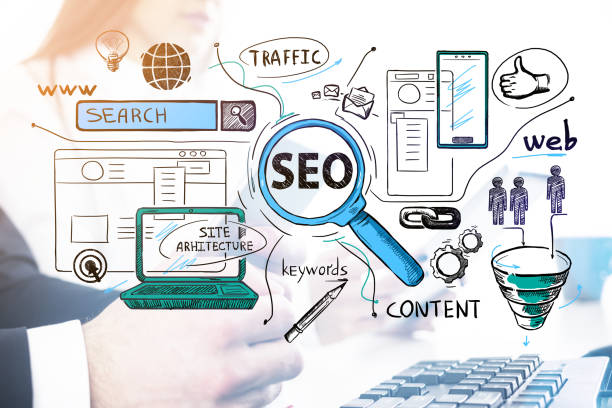
Website responsiveness means that your site automatically adapts to the screen size of different devices (mobile, tablet, desktop).
Given the increasing use of mobile devices for searching the internet, website responsiveness is a necessity.
Search engines also pay attention to website responsiveness, and sites that are responsive get better rankings.
To ensure your website is responsive, you can use Google’s Mobile-Friendly Test tool.
Modern On-Page SEO requires attention to user experience on all devices.
By ensuring your website is responsive, you can provide a better user experience for mobile users and improve your site’s ranking in search results.
On-Page SEO has changed a lot in recent years, and the focus on user experience has become even more important.
The Importance of Website Security (HTTPS)

Website security is another important factor in On-Page SEO.
Using HTTPS (Hypertext Transfer Protocol Secure) means that the communication between the user’s browser and your site’s server is encrypted.
This protects users’ information from hackers.
Search engines also pay attention to website security, and sites that use HTTPS get better rankings.
To enable HTTPS, you need to obtain an SSL (Secure Sockets Layer) certificate.
On-Page SEO also includes security measures, because site security affects user trust and site ranking.
By enabling HTTPS, you can reassure your users that their information is secure on your site and improve your site’s ranking in search results.
On-Page SEO is an ongoing process and requires continuous review and updating.
Frequently Asked Questions
| Question | Answer |
|---|---|
| What is On-Page SEO? | On-Page SEO includes optimizing elements that are directly under your control and within your website. Its goal is to help search engines better understand the content of the page and improve its ranking. |
| Why is On-Page SEO important? | On-Page SEO gives search engines clear signals about the content of the page, improves user experience, and increases the chances of attracting organic traffic. |
| What are the most important On-Page SEO factors? | Keywords, Title Tag, Meta Description, URL structure, high-quality content, image optimization, and internal links are among the most important factors. |
| What is the role of the Title Tag in On-Page SEO? | The title tag is one of the most important signals for search engines and users, which specifies the main topic of the page. It should include the main keyword and be attractive. |
| How important is the Meta Description? | The meta description does not directly affect ranking, but it can improve the click-through rate (CTR) by encouraging users to click. |
| How can we optimize images for On-Page SEO? | By using a descriptive file name, appropriate Alt Text containing keywords, compression to reduce size, and correct dimensions. |
| What effect do Internal Links have on SEO? | Internal links help search engines discover and index site pages, distribute authority (PageRank) throughout the site, and improve user navigation. |
| Is page loading speed one of the On-Page SEO factors? | Yes, page loading speed is a critical factor in On-Page SEO and user experience. Slower pages can lead to higher bounce rates and lower rankings. |
| What are the characteristics of high-quality content for On-Page SEO? | High-quality content must be comprehensive, unique, relevant, reliable, readable, and fully answer the needs and questions of users. |
| How can keywords be used in content? | Keywords should be used naturally in the title, subheadings, first paragraph, body text, and alt text of images. Avoid Keyword Stuffing. |
And other services of Rasa Web Advertising Agency in the field of advertising
Smart Digital Advertising: Transform campaign management with the help of key page optimization.
Smart Advertising Campaign: A combination of creativity and technology to attract customers through intelligent data analysis.
Intelligent Marketing Automation: A fast and efficient solution for analyzing customer behavior with a focus on Google Ads management.
Smart Marketplace: Designed for businesses looking to build digital branding through intelligent data analysis.
Smart Digital Branding: A novel service to increase user engagement through the use of real data.
And more than hundreds of other services in the field of internet advertising, advertising consulting and organizational solutions
Internet Advertising | Advertising Strategy | Advertorial
Resources
On-Page SEO Tutorial for Websites [With Checklist]
,What is On-Page SEO?
,What is On-Page SEO? (Off Page SEO) | Farazsite
,What is On-Page SEO? On-Page SEO Guide | Novin Marketing
? On the fast-paced path of the digital world, Rasaweb Afarin Digital Marketing Agency, with its expertise and experience, is the key to your business’s success. From personal website design to comprehensive digital campaigns, we are with you to have a strong and impactful presence in the online space.
📍 Tehran, Mirdamad Street, next to the Central Bank, South Kazerun Alley, Ramin Alley, No. 6


